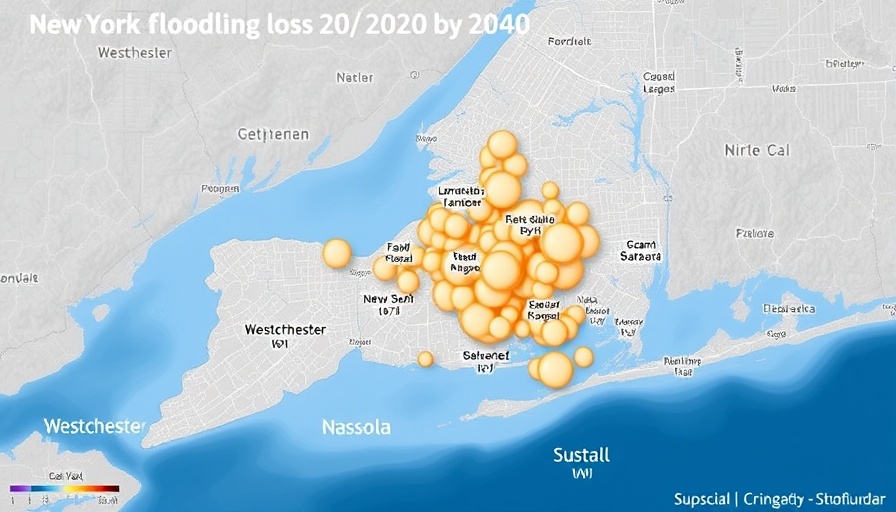
New York's Housing Crisis Meets Climate Change
New York City and Long Island could be on the brink of a significant housing crisis, exacerbated by climate change. According to a report from the Regional Plan Association (RPA), over 80,000 homes are projected to be lost to flooding by the year 2040. As areas become more vulnerable to flooding, the potential shortfall in housing could escalate to an alarming 1.2 million homes. The report emphasizes that these housing challenges are not merely localized issues; they reflect a nationwide concern driven by stringent zoning laws and increasing climate risks.
Climate Change: A Growing Threat
In the tri-state area of New York, Connecticut, and New Jersey, nearly one million buildings face high flood risks. What’s more alarming is that as greenhouse gas emissions rise, the likelihood of extreme weather events will only increase, intensifying risks in coastal and flood-prone regions. The RPA report warns that by 2050, the number of at-risk affordable housing units will triple. This potential worsening of conditions relates directly to the changing climate, making it imperative for city planners and policymakers to act now.
The Zoning Problem
The report points out that zoning regulations historically favor sprawl while hindering compact, sustainable development. This trend not only complicates housing availability but also increases vulnerability to climate hazards. Regulations that were created to manage growth are now inadvertently amplifying the risks residents face from flooding. To counteract this, the RPA highlights the need for reforms that address both climate adaptation and housing needs.
Why This Matters to You
For tech-savvy health enthusiasts, understanding how these societal challenges interact with wellness and community health is crucial. As housing instability grows, so does the potential for negative health outcomes among residents. Therefore, engaging in community discussions and advocating for sustainable urban planning can be a proactive approach to support both climate resilience and public health.
Taking Action
Investing in resilient infrastructure isn't just an option; it's a necessity. As urban areas adapt to these inevitable changes, incorporating strategies for flood resilience and sustainable housing will be vital. By pushing for necessary reforms, individuals not only contribute to their community's stability but also enhance their own wellbeing amid changing environmental realities.
 Add Row
Add Row  Add
Add 




 Add Row
Add Row  Add
Add 



Write A Comment